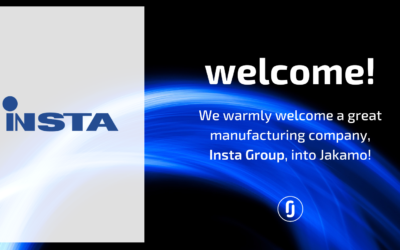Wake-up Call for Supplier Experience

Review of the key business drivers of procurement organizations in the manufacturing ecosystem
Background of the analysis
Today, hardly anyone can question the procurement’s role for manufacturing companies’ overall success. Products are manufactured in complex global ecosystems and companies are highly dependent on their suppliers. Poor delivery performance, quality problems, and high costs of the supply chain have a direct impact on companies’ success, and in the end, on the end-customer satisfaction.
Despite that, the procurement’s point of view and the significance of supplier experience is often overlooked in manufacturing companies’ development initiatives. Most of the strategies and plans do not include procurement. Procurement is rarely the first in the budget requests and there has not been so much progress in last years in this field. Procurement is often in a position that they need to use several legacy solutions and their daily work is still relatively manual, reactive, operatively focused, and non-value added.
Therefore, we wanted to give the floor to procurement professionals and analyze what are the most topical procurement-related key business drivers from their point of view. For this, we analyzed the data collected as a part of our business design process in which we have interviewed personally 83 procurement executives and specialists in 21 medium-sized manufacturing companies in Finland and Sweden. The background summary of the interviewed companies is presented in the table below.

Table 1. Background of the interviews
Findings regarding strategic development focus areas
We analyzed the qualitative interview data and in total 11 different types of development themes came up in the data. The themes are presented in the chart below as how many percentages of the interviewees have introduced them.

Chart 1. Procurements strategic development themes
As showed in the chart, the most common strategic development topics in the companies dissociated quite clearly in the interview data. Based on the analysis the top 5 priority themes of the companies are:
- Supply chain digitalization – 90 % of the companies
- Improving supply chain transparency & communication – 90 % of the companies
- Releasing employees’ time for more value-adding work – 81 % of the companies
- Improving employee satisfaction – 71 % of the companies
- Increasing purchasing’s productivity – 48 % of the companies
These five main topics are discussed more in detail based on the interviews in the following. The third and fifth topics are combined since they are closely linked to each other.
Supply chain digitalization
Typically, the focus of digitalization has been and still is, on companies’ own product & service offering, production, and development of customer experience. Interviewees stated that supply chain digitalization and supplier experience have not yet got the weight that they would deserve in the top management’s priorities. They are not aware of real customer cases how digital solutions have improved the competitive advantage in the supply chain operations.
Based on the interviews the supply chain digitalization is an important near future’s development theme in general for almost all organizations. Anyhow, top management is requesting efficiency improvements and lowering the cost of work with digitalization but they rarely have any ideas on the solutions. The procurement professionals see that it’s hard to find IT vendors who focus to serve procurement only. That obviously is one reason why companies are often lacking concrete initiatives regarding procurement’s digitalization.
For many procurement professionals, digitalization has become a hype and buzzword. Nowadays, they rather believe and discuss automation than digitalization, or wants to reflect digitalization as process automation. In other words, they are looking for automating the core supply chain processes and trying to avoid Artificial Intelligence (AI), Robotic Process Automation (RPA), and other hype projects. They think that automating processes in pieces is the way to see faster results.
The importance of supplier experience with respect to digitalization was also emphasized in the interviews. Interviewees pointed out that the digital development initiatives should consider in addition to the company’s own needs also the supplier’s point of view. It does not make sense to bring a new digital tool in business relations if it is not beneficial and pleasant to use for both parties. Therefore, the interest to invest in traditional company-specific supplier portals has decreased dramatically during the latest years. Companies are preferring cloud solutions and choosing industry-specific standard platforms. If one wants to become a world-class supply chain leader, you need to provide the suppliers an environment where they can serve you as delightfully as possible – take the burden off from their shoulders, not to add anything new.
Improving supply chain transparency & communication
In recent years, the common requirements to operate effectively in a business relationship have become action traceability, transparent real-time data, and ongoing communication. The significance of improving supply chain transparency and communication came up in 90 % of the interviews. The lack of information transparency is one of the most troublesome challenges procurement professionals face in their daily work. When you’re not aware of the facts, you’re not able to form a big picture. And when missing the big picture, it’s hard to make knowledge-based decisions.
According to interviewees, the communication of the supplier-customer relationship is currently really challenging and not transparent with email. It is difficult to keep on track of what is going on related to different topics (orders, claims, offer requests, etc.) because the communication information is scattered in tens of emails of many people in both companies. When someone in own or supplier’s organization is absent it is difficult or often impossible to see what has been agreed or what is the status of a specific topic.
When companies are operating in crisis and uncertain circumstances, transparent information and on-going communication get even more crucial. According to interviews, the importance of transparency and communication has even emphasized lately due to the uncertainty caused by the covid-19 pandemic.
Smooth interaction and transparency in supplier relationships are more important than ever. Platforms are designed to serve ecosystems and fulfill these requirements a lot better than the traditional company-specific portals. The data and interaction are available and visible even when the employees are absent. The relevant data is yet available and seamless operational execution is still possible.
Increasing purchasing productivity & releasing employees’ time for more value-adding work
There is a high pressure to cut or at least not to increase the number of employees in purchasing even when companies are growing and there are more transactions to handle. It’s amazing how much non-value-added work manufacturing companies are still doing nowadays in purchasing and supply chain management.
According to these interviews on average 40 % and our previous review from last year approximately 50 % of work time are spent on manual work, such as:
- Comparing deviations of a purchase order and supplier’s order confirmation
- Typing purchase order confirmations to ERP system
- Reminding suppliers of late order confirmations, late deliveries, and upcoming important deliveries
- Searching purchase order-related communication information that is scattered in tens of emails of many people
- Handling, sending and searching purchase order related material certificates and quality documents
Since about half of the working time is spent on manual tasks, there is a huge potential to improve productivity. This type of manual routine work decreases significantly the company’s operative throughput, creates additional costs, and causes unnecessary delays in deliveries. At the end of the day, the end-customer most certainly does not want to pay for those non-value-added activities.
Interviewees discussed that by automating operative non-value-added work purchasers could use half of their work time for something more value-added, such as supplier experience management, supply chain collaboration & development, sourcing, and optimization. Interviewees estimated that this could bring significant benefits to supply chain efficiency, quality and cost, and of course at the end to improve the end-customer satisfaction.
Improving employee satisfaction
As presented in the previous chapter, nowadays, the job descriptions especially in operative purchasing are still highly focused on manual routine work. The problem is that skillful people have ended in a position where they do non-value-added activities and non-productive process work. At the same time, people are completely overloaded. It is very common in the manufacturing industry that due to heavy manual workload purchasers do not have enough time to do value-added and personally much more pleasant work.
It was clearly stated in the interviews that this situation is not motivating at all for purchasers. People would prefer to work with more value-added tasks and use rather their brain than hands. They would like to transform their job from manual operative work towards strategic development-oriented work. Based on the interviews, in the current situation, it is difficult to keep talented people motivated, and poor employee satisfaction causes high employee turnover.
Managerial summary
The procurement executives and specialist of medium-sized manufacturing companies has clearly recognized the criticality and opportunities of digitalization. Anyhow, companies are lacking concrete development initiatives. They do not always understand how to approach the topic in practice and there is a risk that supply chain digitalization is becoming just one more buzzword among others. In addition, the analysis shows that supplier experience should be considered carefully in procurement-related digital initiatives.
Procurement executives and specialists have identified a huge potential to improve the supply chain transparency and communication and to increase the productivity in procurement by automating the manual work. Currently, way too much time is wasted for non-value-added work, and employee satisfaction of the procurement professionals is low because of the high workload and monotonous job description.
The following action list will help you to get started:
- Investigate in which processes exist the biggest workload of manual routine work that can be automated with a digital solution
- Search for real customer cases which can present proven benefits of solving the challenge in practice
- Avoid tailored software solutions – prefer best industry-specific standard platforms
- Solve challenges one by one in small pieces – avoid big hype projects
- Set targets first for low hanging fruits – quick wins motivate and encourage the personnel for further development
- Don’t forget the supplier experience – without an excellent supplier experience you won’t achieve any results
Timo Rossi, CBDO at Jakamo
Jarl Matti Anttila, CMO at Jakamo
The article was published originally in Jakamo’s Supplier Experience online magazine.
E-book: Supplier Experience
Supplier Experience – The Fundamentals of Modern Supplier Collaboration is a carefully crafted guide that presents the concept of Supplier Experience through six practical lenses. Download your free copy!
Recent Posts
- Jakamo Business Central ERP Connector Now Available in Microsoft Marketplace
- Insta Group strengthens supplier collaboration and sustainability efforts with Jakamo
- TECHSAVVY MEDIA: Supply chain expert – Relationships with your suppliers are key to greener manufacturing
- Fastems Advances Supply Chain Sustainability with Jakamo
- Jakamo achieves ISO 27001 certification






